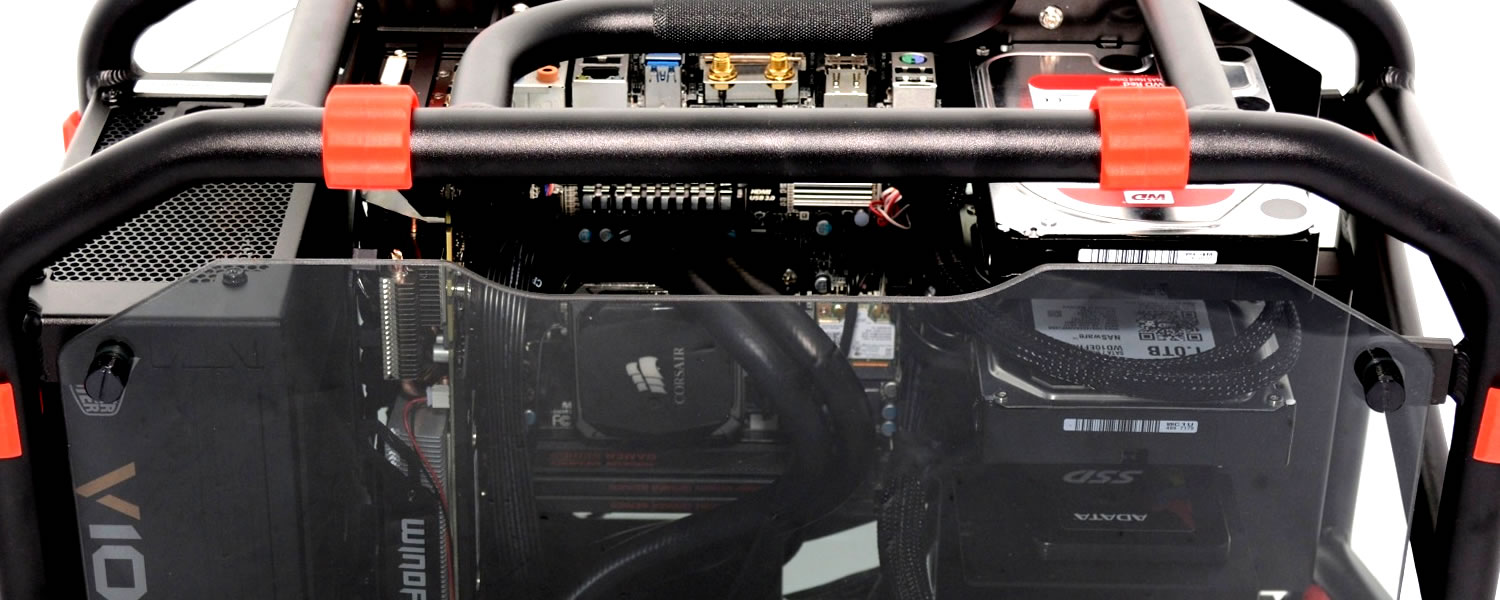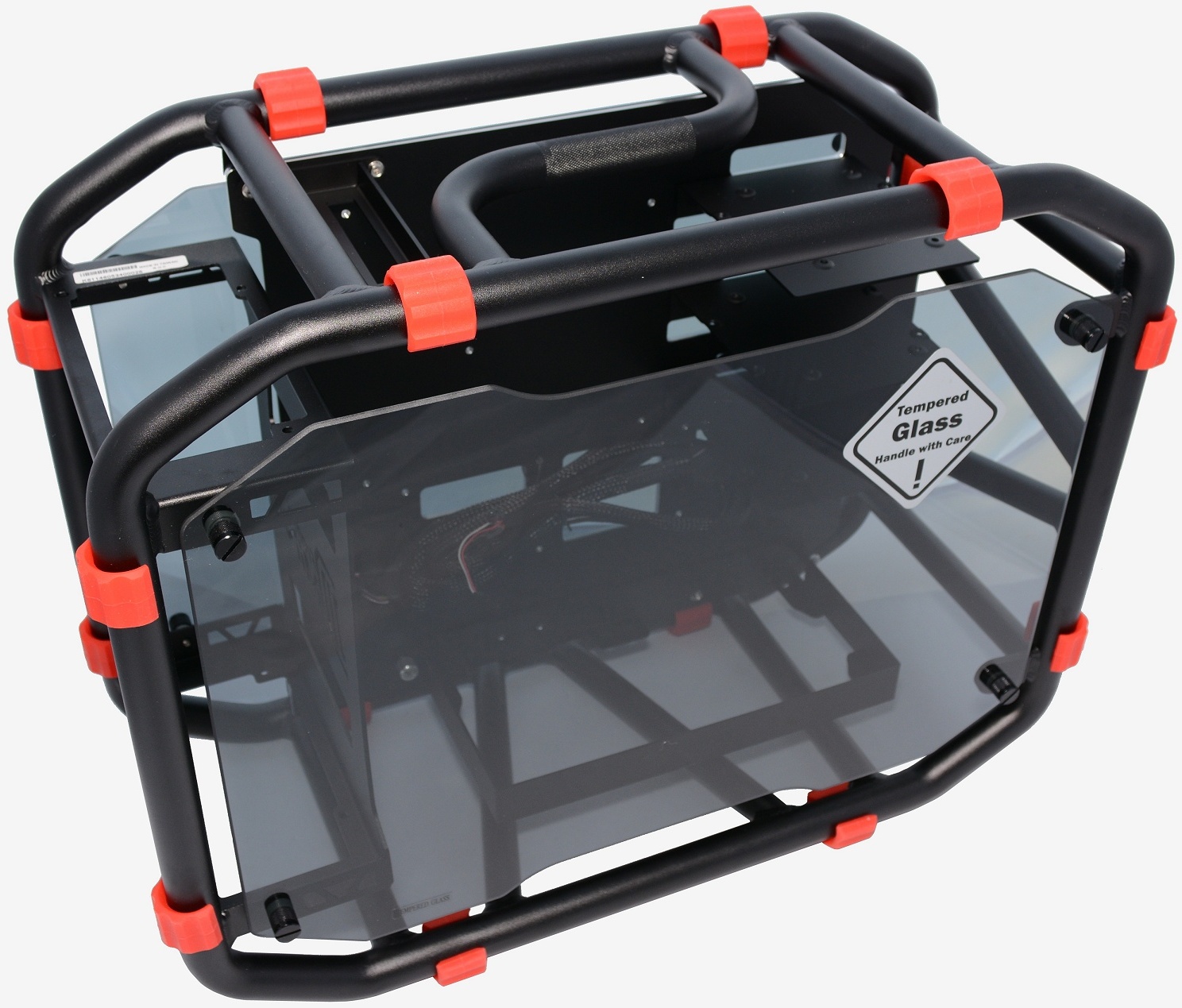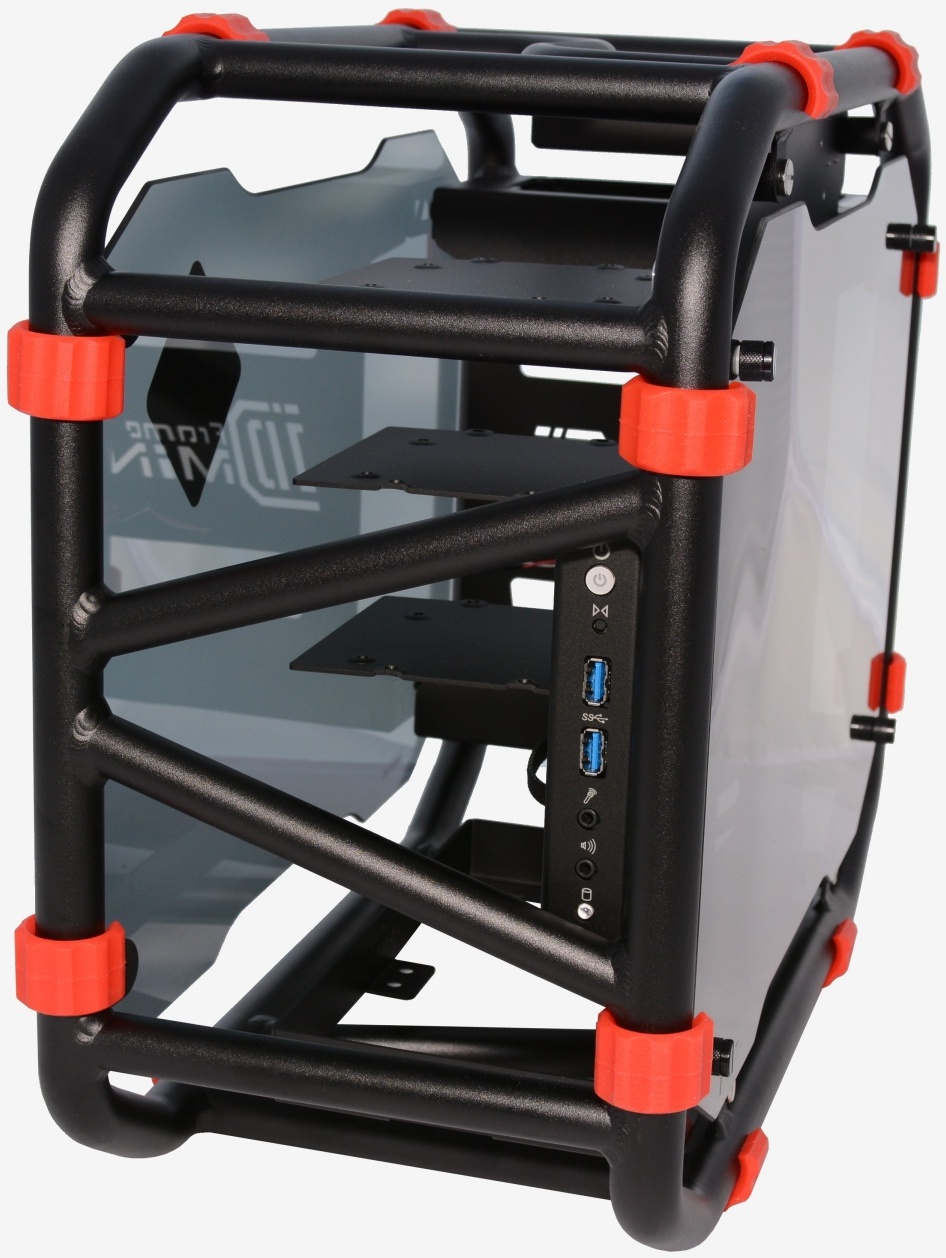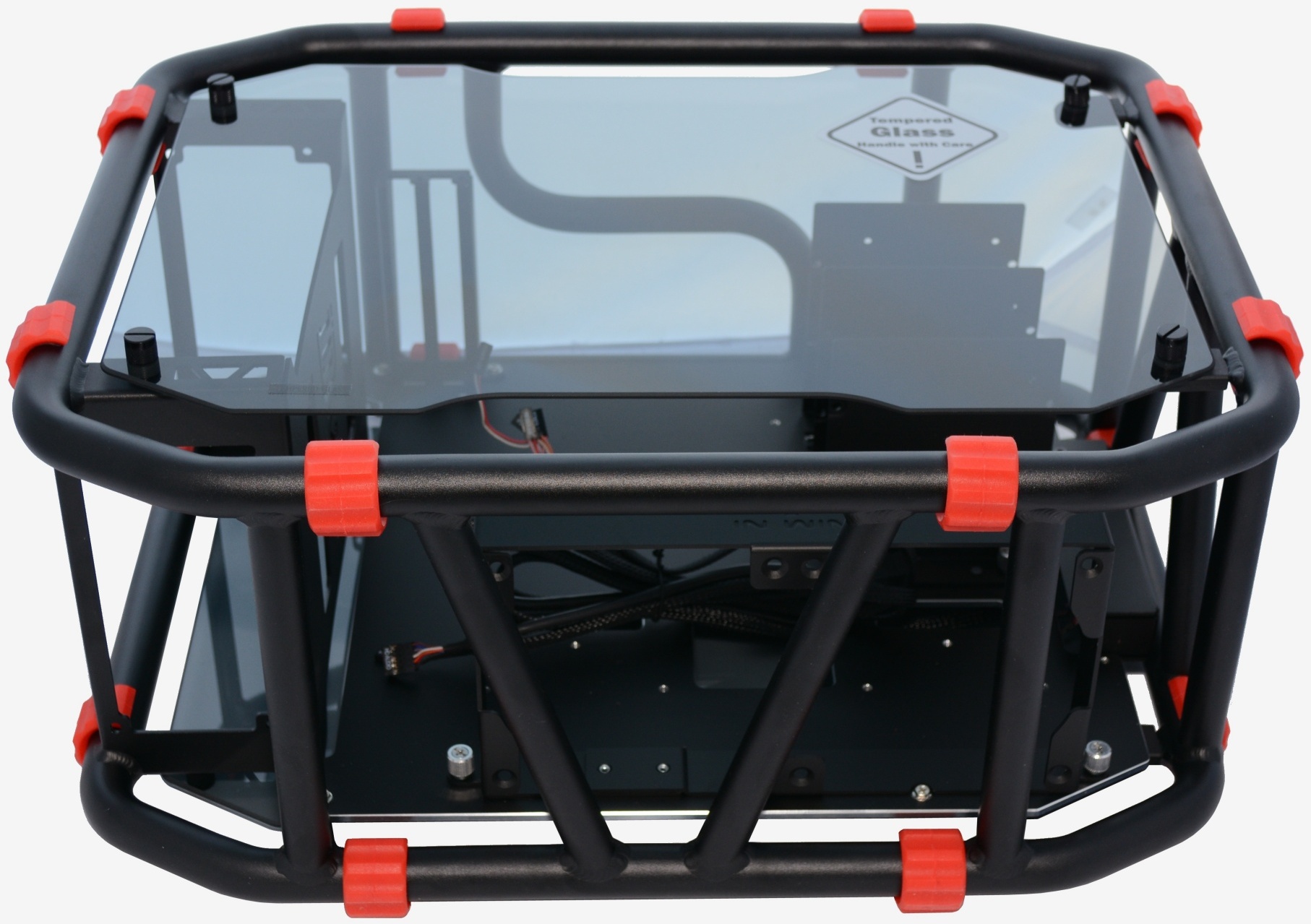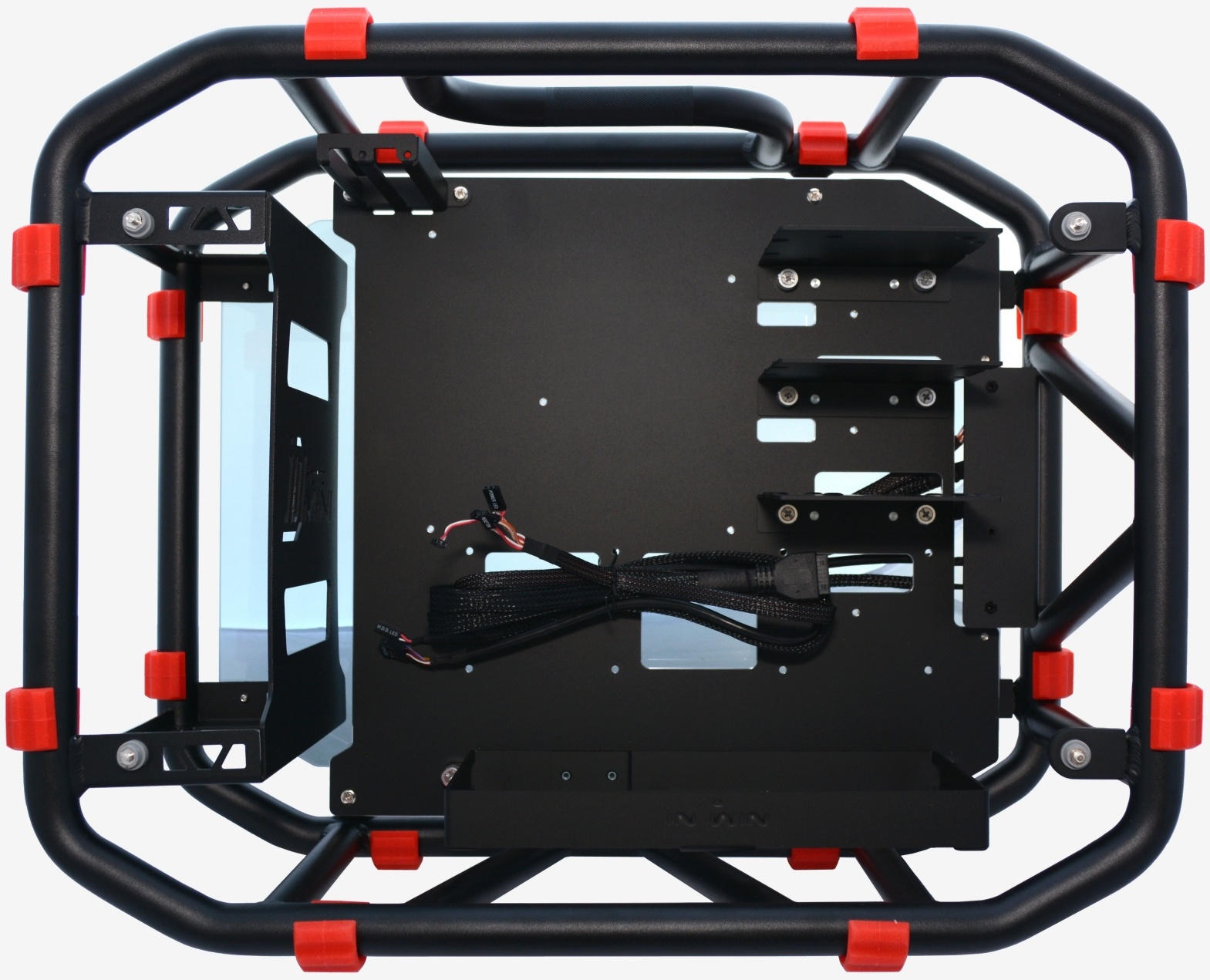Many interesting cases caught our attention last year: Cooler Master's HAF XB with its test-bed-like layout, Lian-Li's D8000 with its support for up to 20 3.5" hard drives, and Silverstone's Sugo SG10 for accommodating beefy hardware in such a tiny package.
However, of all the weird and wonderful cases we saw in 2013, In Win's D-Frame remains the most memorable. Despite being largely impractical, fairly featureless and wildly expensive, it was nonetheless my favorite and still stands as a masterpiece in my mind.
Given its radical design, most people were bound to either love it or hate the D-Frame on first sight. There was simply no way it could appeal to every enthusiast, both because of its unique look and because it was $400 – quite a hurdle for most prospective buyers.
Anything as different as the D-Frame tends to carry some kind of premium, so the price wasn't all that surprising and even less so when we learned that the case is hand-crafted, coated in a durable paint job and sports tempered glass side panels. It's made with care.
A lot of time and effort goes into creating each D-Frame: raw aluminum pipes are cut precisely using a CNC machine then manually bent, checked and milled to ensure smooth edges. The parts are welded together and the final product is measured for perfection before being painted or anodized.
With a little over a year having passed since we first received the original D-Frame, In Win has been hard at work creating a second installment. The D-Frame Mini takes the original design and shrinks it down to accommodate the now popular Mini-ITX form factor.
As it was, the original D-Frame was very limited in terms of space for an ATX case with a 98L capacity so shrinking it down to just 46L doesn't seem like a move that will make the D-Frame more appealing, yet the 53% reduction has somehow allowed In Win to do more.
The case can now support cooling radiators and models as large as 240mm will fit. The graphics card length has been extended from 330mm to 340mm, and the D-Frame Mini can now rest on one of six sides rather than just two. The power supply is also mounted internally rather than externally and In Win has added an anodized black color to the mix.
In & Around the D-Frame Mini
Unlike the original D-Frame, which required a rather lengthy assembly process, the D-Frame Mini comes pre-built and ready to accept computer hardware. The D-Frame Mini measures 405 x 230 x 501mm and can house power supplies as long as 220mm, graphics cards measuring up to 340mm and CPU heatsinks as tall as 165mm.
From the front, the D-Frame Mini reveals a panel with four diagonal beams as well as a slot that allows access to the front panel connectors.
Front panel connectivity includes a pair of USB 3.0 ports along with two audio jacks for headphones and a mic. The panel also includes small power and reset buttons beside a power light.
Given the D-Frame Mini's $350 price tag, In Win could have integrated a more impressive panel and perhaps done something more creative with the power button. Still, as boring as the front panel I/O is, it still manages to blend well into the case's design.
The top panel is quite similar to the front panel except there is no connectivity, fan mounts or much of anything besides four rubber pads that protect the case if you place it upside down. The case's carrying handle is integrated nicely, placed directly in the center of the top panel, making it easy to lift and move the D-Frame Mini.
Apart from the compact size and convenient handle, the case's light weight of 5.25kg adds to its portability and seems ideal for LAN goers.
The base panel is different to the top panel in design – in fact it looks more like the front panel. It features the same four rubber pads which are stuck on using adhesive tape.
The rear panel is rather bland, though it's designed to house the power supply. Once installed, the PSU will dominate the majority of the space here. There's no rear motherboard access as the board is mounted sideways, much as it is in the Silverstone Raven cases.
The D-Frame Mini supports three 3.5" or 2.5" drives along with two 2.5" drives, which is the same configuration used by the much larger D-Frame. There are also two 120mm fan mounts included, though the fans themselves must be purchased separately. These mounts also support 120mm or 240mm radiators, giving the D-Frame Mini the ability to accommodate liquid cooling systems.
Although this is a Mini-ITX case, there are two expansion slots allowing the D-Frame Mini to support dual-slot PCIe graphics cards. With room for a GeForce GTX 980 or Radeon R9 290X, we have the makings of quite a serious gaming case here.
